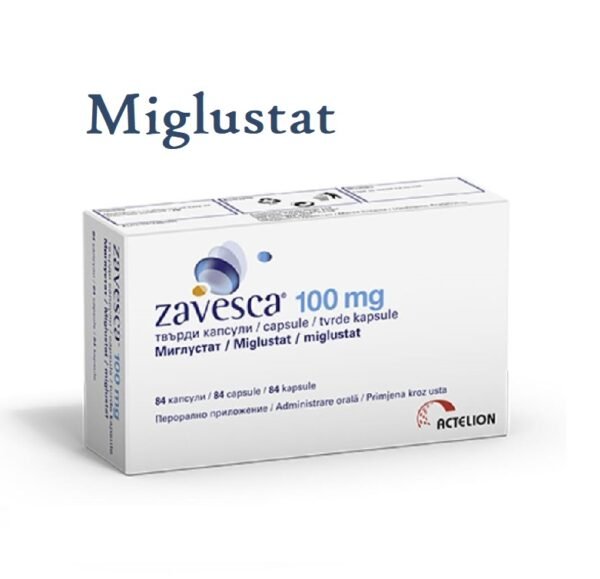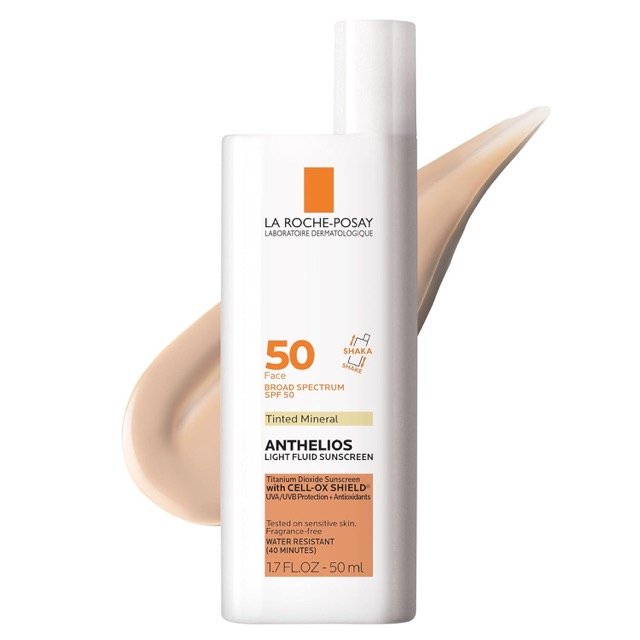The enzyme glucosylceramide synthase is inhibited by the drug miglustat (Zavesca, Yargesa). Patients with mild to severe type 1 Gaucher disease who cannot be treated with imiglucerase, an enzyme replacement therapy, are prescribed it.
Miglustat Uses:
- Gaucher disease:
- Used to treat people with mild-to-moderate type 1 Gaucher disease if other treatment alternatives such as enzyme replacement therapy are not available (eg, due to allergy, hypersensitivity, or poor venous access)
- Off Label Use of Miglustat in Adults:
- Type C Niemann-Pick disease
Miglustat (Zavesca, Yargesa) Dose in Adults:
Management of Type 1 Gaucher disease with the drug miglustat (Zavesca, Yargesa) dose:
- Take 100 mg by mouth three times a day.
- If side effects like shaking or diarrhea occur, the dose can be lowered to 100 mg once or twice a day.
Niemann-Pick Type C illness therapy with miglustat (Zavesca, Yargesa) dosage:
- Take 200 mg by mouth three times a day.
Miglustat (Zavesca, Yargesa) Dose in Children:
Niemann-Pick Type C illness therapy with miglustat (Zavesca, Yargesa) dosage
Note:
- It's recommended for patients with issues related to the brain, thinking, or mood (Patterson 2012).
- There's limited data on treating babies. Some babies treated with miglustat had muscle weakness, trouble swallowing, and feeding problems. The youngest baby given miglustat was 7 months old.
- Start with a low dose and increase if needed, especially if there's stomach upset or diarrhea. It might take 6-12 months of treatment before seeing benefits.
Dose based on Body Surface Area (BSA) for Kids under 12 years:
- BSA up to 0.47 m^2: 100 mg once a day
- BSA 0.47-0.73 m^2: 100 mg twice a day
- BSA 0.73-0.88 m^2: 100 mg three times a day
- BSA 0.88-1.25 m^2: 200 mg twice a day
- BSA over 1.25 m^2: 200 mg three times a day
For Kids 12 years and older:
- Take 200 mg three times a day.
Pregnancy Risk Factor C
- Tests on animals found problems related to pregnancy.
- Women with untreated type 1 Gaucher disease are more likely to have a miscarriage. They might also have an enlarged liver and spleen, and low platelet counts, which can cause complications during pregnancy.
Use of Miglustat while breastfeeding
- We don't know if miglustat gets into breast milk.
- Because the medicine might harm a breastfeeding baby, you have to decide: either stop breastfeeding or stop taking the drug. Consider how important the medicine is for the mother when making this choice.
Miglustat (Zavesca, Yargesa) Dose in Kidney Disease:
For Gaucher Disease:
- If kidney function is really good (CrCl >70): Usual dose, no changes needed.
- If kidney function is okay (CrCl 50-70): Take 100 mg two times a day.
- If kidney function is lower (CrCl 30-50): Take 100 mg once a day.
- If kidney function is quite low (CrCl <30): It's best not to use the medicine.
For Niemann-Pick Type C Disease (not the usual use, info from the Canadian guide):
- If kidney function is okay (CrCl 50-70): Take 200 mg two times a day.
- If kidney function is lower (CrCl 30-50): Take 100 mg two times a day.
- If kidney function is quite low (CrCl <30): It's best not to use the medicine.
Miglustat (Zavesca, Yargesa) Dose in Liver disease:
- The manufacturer hasn't given any dose changes for liver issues (they haven't studied it).
- But it's likely that no dose changes are needed because miglustat isn't broken down by the liver.
Common Side Effects of Miglustat (Zavesca, Yargesa):
- Endocrine & metabolic:
- Weight loss
- Neuromuscular & skeletal:
- Weakness
- Tremor
- Leg cramps
- Central nervous system:
- Dizziness
- Headache
- Ophthalmic:
- Visual disturbance
- Gastrointestinal:
- Flatulence
- Diarrhea
- Vomiting
- Abdominal pain
- Nausea
Less Common Side Effects of Miglustat (Zavesca, Yargesa):
- Central nervous system:
- Unsteady gait
- Memory issues
- Paresthesia
- Migraine
- Gastrointestinal:
- Constipation
- Dyspepsia
- Xerostomia
- Abdominal distension
- Epigastric pain
- Anorexia
- Bloating
- Neuromuscular & skeletal:
- Back pain
- Endocrine & metabolic:
- Menstrual disease
- Hematologic & oncologic:
- Thrombocytopenia
Contraindications to Miglustat (Zavesca, Yargesa):
- The manufacturer doesn't list any situations where the drug shouldn't be used.
- In Canada, the drug shouldn't be used by anyone who's allergic to miglustat or its ingredients, and women who are or might become pregnant.
Warnings and precautions
Diarrhea:
- Most people who take this drug get diarrhea, and many lose weight in the first year.
- The diarrhea usually gets better over time with continued use.
- To help with diarrhea:
- Try changing your diet: eat fewer sugary foods and avoid lactose and other carbs.
- Take miglustat between meals.
- Consider anti-diarrhea medicine.
- If diarrhea happens while on the drug, stay away from high-carb foods.
Peripheral neuropathy:
- Some people taking this drug have nerve problems.
- Regular nerve checks are needed.
- If someone starts feeling symptoms like numbness or tingling, think about whether the medicine's benefits are worth the risks.
- If these nerve problems get bad, stopping the medicine might be needed.
Platelet counts decreased:
- Some people with type 1 Gaucher disease who switched from another treatment to miglustat have seen a small drop in their platelet numbers. But they didn't bleed because of this.
- If on miglustat, it's important to check platelet levels regularly.
Tremor:
- Starting miglustat can cause new shakiness (tremor) or make existing shakiness worse.
- This shakiness usually starts within the first month of using the drug.
- It might go away on its own in 1-3 months or get better if you take a lower dose.
- If reducing the dose doesn't help quickly, stopping the medicine might be needed.
Renal impairment
- Be careful when using miglustat in people with kidney issues.
- Those with kidney problems might need a different dose.
- If someone has really bad kidney problems, they shouldn't take miglustat.
Monitoring parameters:
Neurologic Checks
- Start with a check before treatment.
- Repeat every 6 months.
Adverse Effects
- Keep an eye out for any bad reactions or side effects.
Weight Monitoring
- Track weight to see any changes.
Platelet Count
- Check the number of platelets in the blood.
Kidney (Renal) Health
- Monitor how well the kidneys are working.
How to administer Miglustat (Zavesca, Yargesa)?
Taking Miglustat Capsules
- Can be taken with or without food.
- Taking it between meals might help reduce diarrhea.
- Always take the capsules at the same time each day, spaced evenly.
If Can't Swallow Capsules
- If someone can't swallow the capsule, they can use the inside powder.
- Mix the powder into a drink right before using it. Don't keep it for later.
- It's okay to add sweeteners; they shouldn't cause any problems.
Mechanism of action of Miglustat (Zavesca, Yargesa):
- Miglustat blocks an enzyme that makes glycosphingolipids.
- By doing this, it slows down the creation of a specific glycosphingolipid called glucosylceramide.
- In type 1 Gaucher disease, too much glucosylceramide piles up, leading to problems specific to this condition.
Distribution:
- It spreads out in the body, occupying 83-105 liters of space.
Protein Binding:
- It doesn't attach to proteins in the blood.
Metabolism:
- Our body doesn't seem to change it.
Bioavailability:
- 97% of the drug is usable by the body once taken.
Half-life:
- It takes 6-7 hours for half of the drug to leave the body.
Peak Time:
- It reaches its highest level in the blood in about 2-2.5 hours.
Excretion:
- It leaves the body through the urine, unchanged.
International Brand Names of Miglustat:
- Zavesca
- Brazaves
- Yargesa
Miglustat Brand Names in Pakistan:
Not Available.







